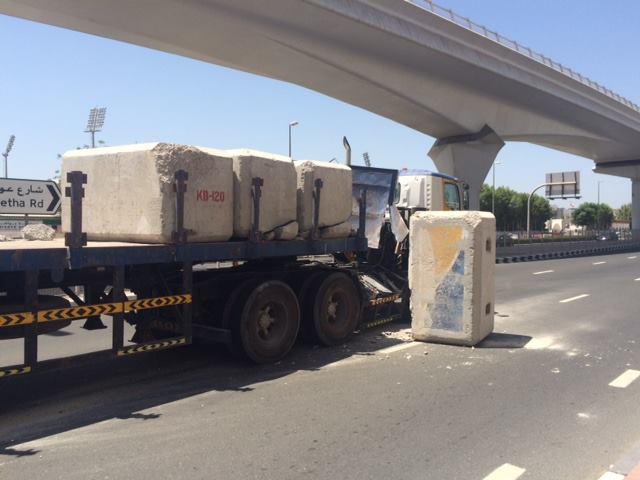Load restraint isn't a particularly complicated science: all you have to do is make sure that your goods don't fall off the vehicle that's transporting them from A to B. Not exactly brain surgery, is it?
And yet we still see far too many instances of half-hearted load restraint, which all too often results in a scene like this:

Improper load restraint can be very costly if your goods get damaged, but more importantly, an accident like the one pictured above can be life-threatening. What if your unsecured load crashes into another vehicle, or hits a passing pedestrian?
The need for adequate load restraint is very pressing indeed, though if you're reading this, you've probably recognised that already. Here, then, are a few tips that will help you to keep everything secure and protect the people around you:
- Use the right ratchet straps. We sell a variety of ratchet straps here at SLG, and each one has a different lashing capacity and minimum breaking strength. The lashing capacity is the maximum tension that the strap in question is capable of sustaining; the minimum breaking strength is the maximum force that the strap will withstand when properly secured. Check this information when purchasing ratchet lashings, and ensure that the products you use are suitable for the task at hand.
- Ensure that lashings are properly secured. Ratchet lashings are available with a variety of different fittings (including claw hooks, delta links, and rave hooks); obviously, you'll need to select the right fitting for your requirements, but on an even more basic level, you MUST ensure that all straps are properly attached and secured before setting off. Even the very best load restraint products are useless if not properly used!
- Consider additional/alternative load restraint measures. Ratchet lashings are the preferred method of load restraint, but you may benefit from using other products such as bungee cords, loadbinders, and cargo bars to make absolutely sure that nothing is going anywhere.
In a nutshell, our advice is this: assess your loads properly, choose an appropriate load restraint method (or methods) for the job, and ensure that everything has been properly secured before beginning your journey.
SafetyLiftinGear's full collection of load restraint equipment can be found here - feel free to email sales@safetyliftingear.com if you have any further questions.

